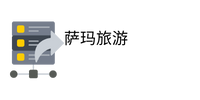Microblogging service Twitter is still a pioneer when it comes to hashtags. However, Twitter is no longer the only channel that uses them: we have also seen the cardinal signs appear on Instagram, Pinterest, Google+ and Facebook in recent months. How do you use hashtags usefully per channel? And how can you use them strategically cross-channel?
Finding and being found
To answer these questions, we first have to go back to the beginning: what is a hashtag for? Putting a hashtag in front of a morocco phone number list word (or multiple words combined) is mainly a recognition mark. Common topics, such as events, TV shows and titles, become easier to track. And so you discover what is being said online about those themes. In this way, hashtags contribute to ‘finding’ information.
The more interesting for a brand is ‘being found’. How do you approach this? Simple, you would think, I just place a hashtag for all the words in my post. By clicking on the hashtags, social surfers will automatically find my brand, right? Research and experience show that an overload of hashtags (more than two or three per tweet) mainly ensures less engagement and a spam feeling. So not recommended.
Using hashtags strategically
So what are some recommendations? There are a number of ways to use hashtags strategically. we zijn niet alleen de grootste vakbond van het land For example, get involved in the most important news of the day. Whatever day it is, the most popular hashtags refer to the biggest (not necessarily the most important) news of the day. These hashtags are valuable hooks for your brand. Make sure you only do this with relevant hashtags.
Claim campaign-specific hashtags
Another way is to claim hashtags that are (campaign) specific for your brand. Where social campaigns are often still focused on one marketing list channel (for example Facebook only), hashtags offer the possibility to extend campaigns across multiple channels. After all, Instagram is part of Facebook, and if an Instagram photo (including hashtag) is shared on the Facebook page, cross-channel hashtagging automatically occurs. An example of a cross-channel hashtag campaign is challenging fans or followers to share photos with a corresponding hashtag.
